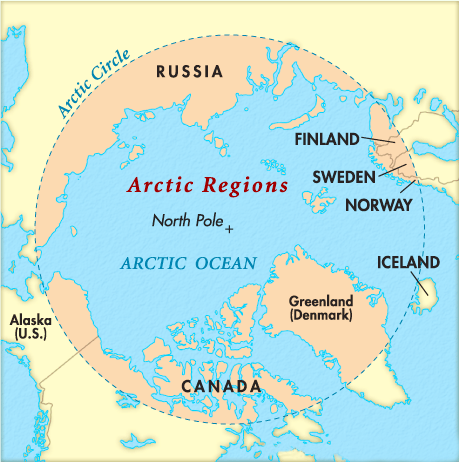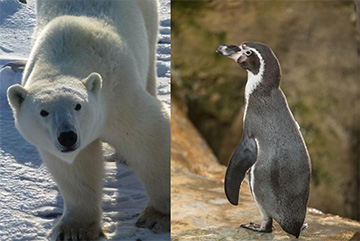Biodiversity & Environment
Decreasing Ice and Its Impact: Arctic
- 20 Oct 2021
- 5 min read
Why in News
According to a recent study, if carbon emissions continue at current levels, summer ice in the arctic will disappear by 2100 and, along with it, creatures such as seals and polar bears.
- The Arctic sea ice reached its minimum extent, coming in at 4.72 million square miles. It is the 12th lowest on record and the record minimum melting of the ice occurred in 2012.
Key Points
- About the Study:
- Coverage:
- The study covers a 1 million-sq km region north of Greenland and the coasts of the Canadian Archipelago, where sea ice has traditionally been thickest round the year, and thus likely to be most resilient.
- Two Scenarios:
- Optimistic\Low Emissions (if carbon emissions are brought in check): Under this scenario, some summer ice could persist indefinitely.
- Pessimistic\High Emissions (if emissions continue as they are): Under this scenario, summer ice would disappear by the end of the century.
- Ice from even the central Arctic will decrease by mid-century, and will no longer endure through the year.
- Locally formed summer ice will persist in what is known as the Last Ice Area, but will now be only a metre thick.
- Coverage:
- Implications:
- Low-emissions Scenario:
- At least some seals, bears and other creatures may survive.
- These species currently exist under similar summer conditions along western Alaska and parts of Hudson Bay.
- At least some seals, bears and other creatures may survive.
- Higher-Emissions Scenario:
- By 2100, even the locally formed ice will disappear in summer.
- With no summer ice anywhere, there will be no ice-dependent ecosystems.
- Low-emissions Scenario:
Arctic
- The Arctic is a polar region located at the northernmost part of Earth. Land within the Arctic region has seasonally varying snow and ice cover.
- It consists of the Arctic Ocean, adjacent seas, and parts of Alaska (United States), Canada, Finland, Greenland (Denmark), Iceland, Norway, Russia, and Sweden.
- Since 2013, India has had observer status in the Arctic Council, which is the predominant inter-governmental forum for cooperation on the environmental and development aspects of the Arctic.
Sea Ice
- About:
- Sea ice is frozen seawater that floats on the ocean surface. It covers about 7% of the Earth's surface and about 12% of the world's oceans..
- This floating ice has a profound influence on the polar environment, influencing ocean circulation, weather, and regional climate.
Interesting Fact
- About:
- Penguins live in Antarctica (to the south), and polar bears live in the Arctic (to the north).
- While they inhabit similar polar habitats with lots of snow and ice, they have never lived together.
- Reasons for No Polar Bear in Antarctica:
- The main reasons there are no polar bears in Antarctica are evolution, location and climate.
- Bears evolved on the planet after Antarctica broke away (Plate Tectonics) from the other continents, and after that they had no easy way of getting there.
- The main reasons there are no polar bears in Antarctica are evolution, location and climate.
- Reasons for No Penguins in Arctic:
- In the North Pole, predators such as polar bears and arctic foxes would limit their survival.
- There is no water in the north pole for them to hunt because the ice is so thick.
- Even if there was a hole in the ice, how would the penguin get back up if they can't find the hole they went down in.
- Penguins are predominately shore birds and thus do not venture far into the ocean.
- In addition, migrating through warmer waters to reach the northern hemisphere is almost impossible for penguins and could prove fatal.






